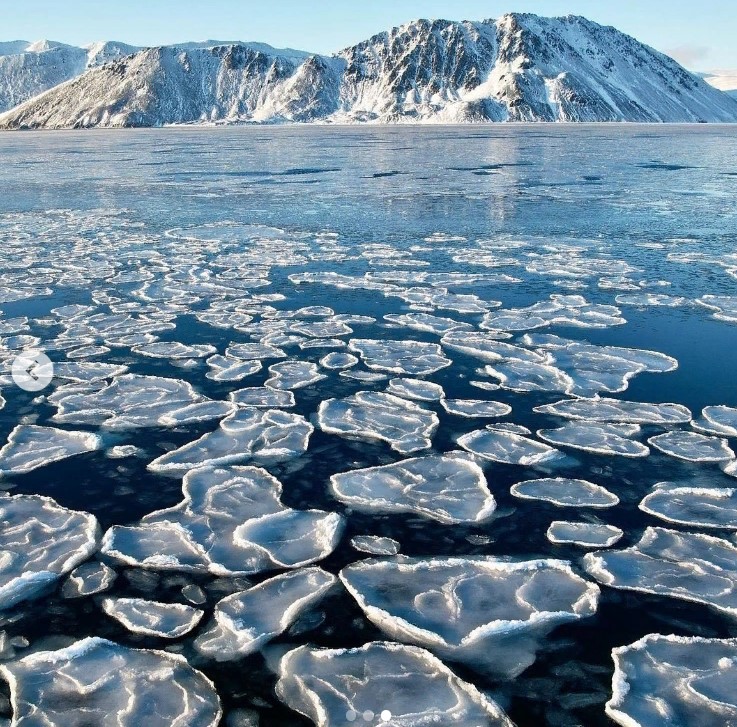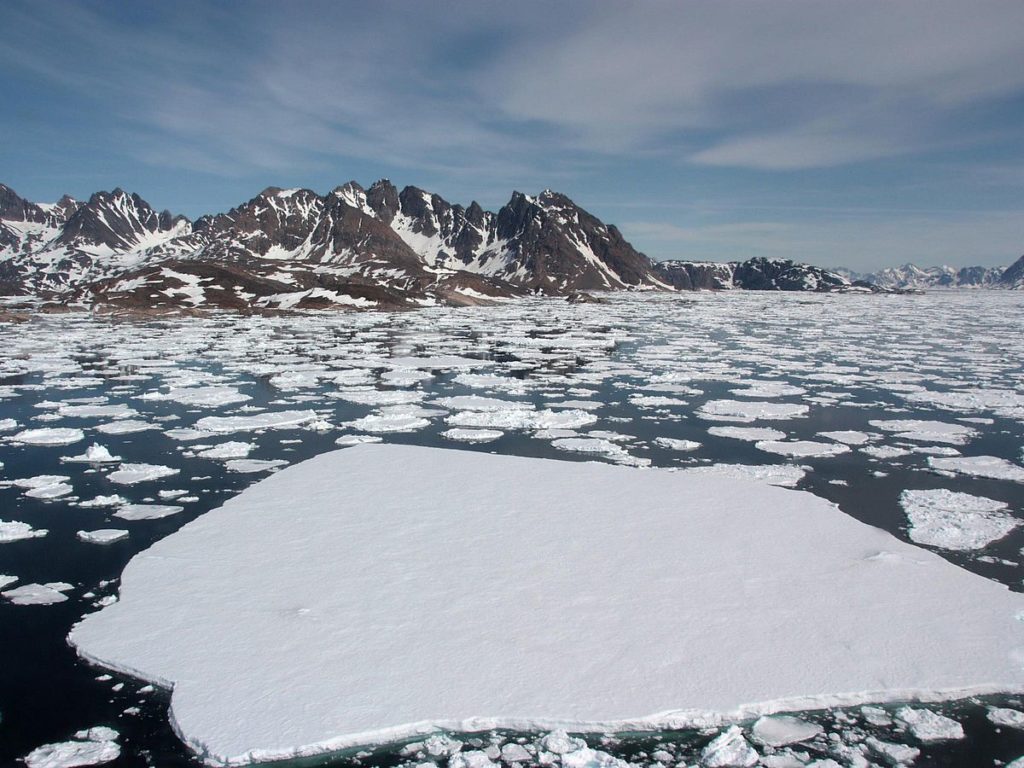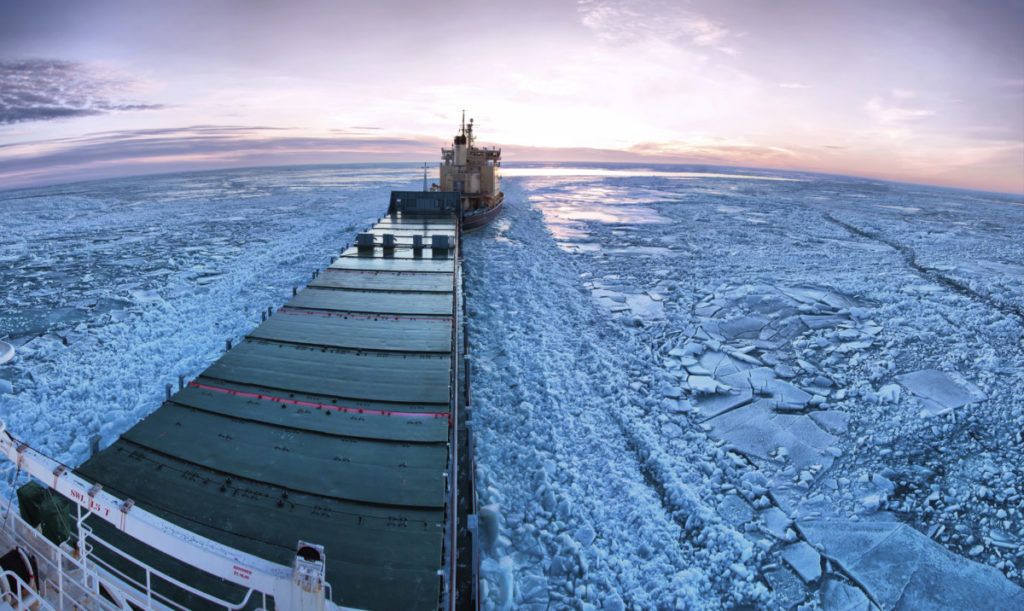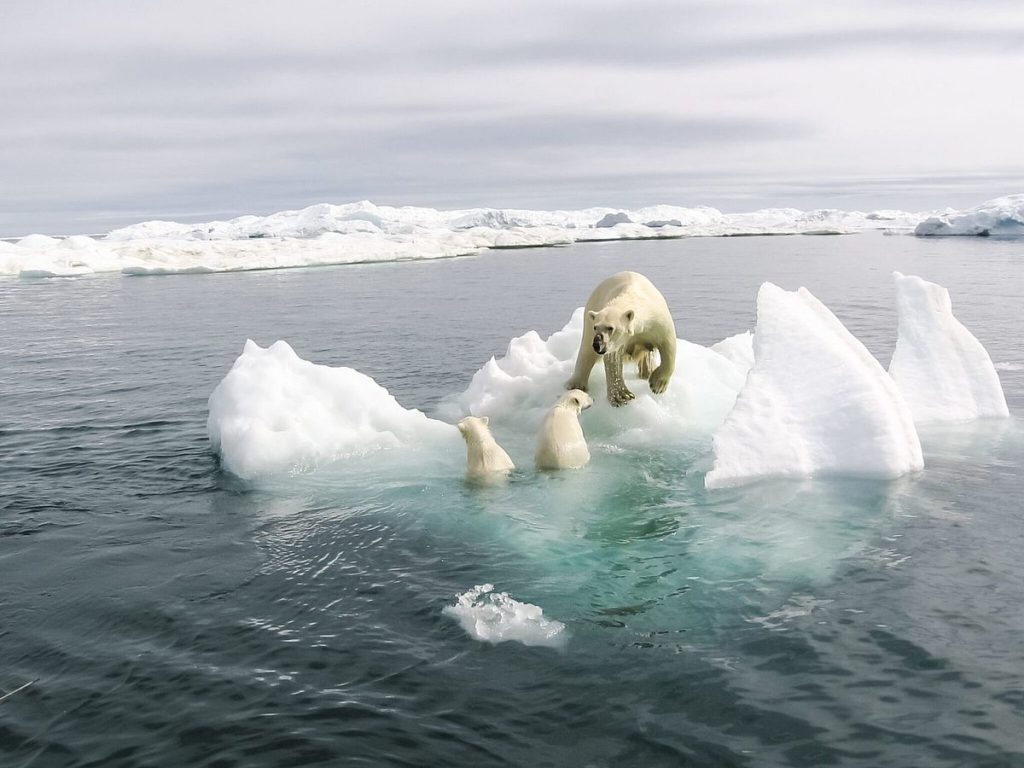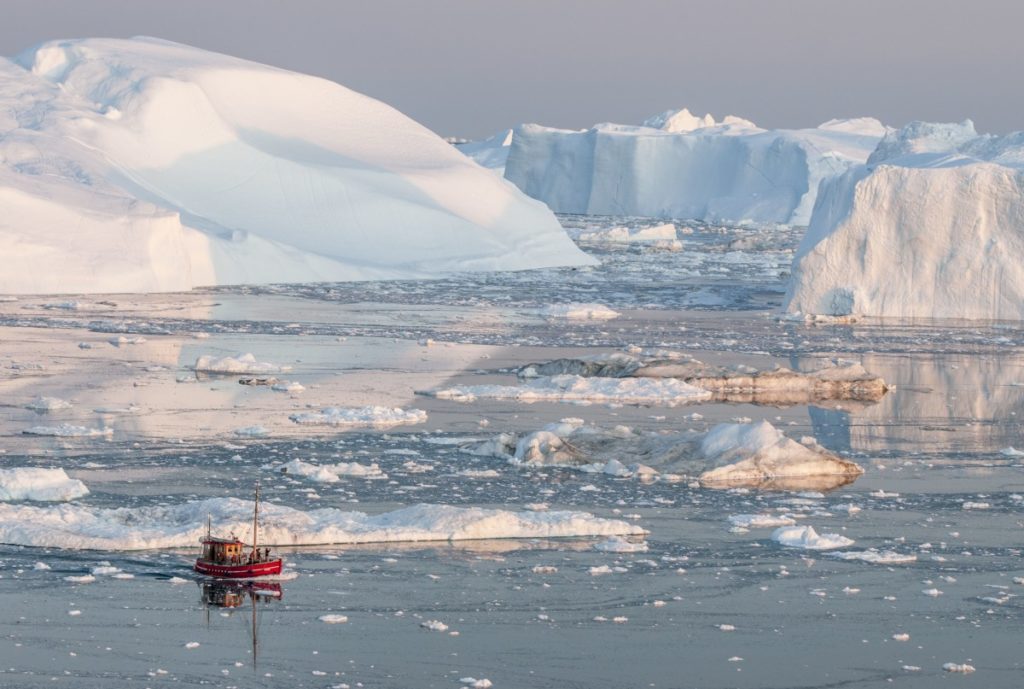#ARCTIC. #SIBERIA. THIS IS TAIMYR. Information about sea ice is very important for navigation in ice conditions. The images of the Project Office for the Development of the Arctic (PORA) show floating sea ice in Chukotka.
According to the data cited by the head of the Russian Academy of Sciences Oceanology Institute’s polar oceanology group, honorary polar explorer Sergey Pisarev, such ice floats on the oceans and seas surface and is 98–99 percent formed from sea salt water. It is not connected to the shore or the bottom and is in constant motion under the influence of wind and streams.
According to the Project Office for the Development of the Arctic, floating ice is distinguished by shape, size, age, cohesion and other features. The ice of such shape can be fixed or drifting. The initial formations of ice are distinguished by age (ice needles, ice fat, snezhura, sludge, pancake ice, bottle, dark nilas), young ice (light nilas, gray ice) 5–15 centimeters thick, winter ice (gray-white and white) 15–200 centimeters thick.
The presence of floating ice creates an obstacle to navigation. The threat to the same ship depends on the water salinity, the ice thickness and age, the presence and number of hummocks.
Unlike freshwater, sea ice is not homogeneous. It can rather be compared with a mixture of solid fresh ice and channels cutting through it with salty brine. And depending on this brine volume, the ice properties, including mechanical ones, change greatly: sea ice is softer than freshwater, but it is more difficult to prick.
Recall that in the fall of 2021, the Northern Sea Route (NSR), the country’s key transpolar transport artery, passed a stress test, faced with a major emergency. Due to early cooling in the waters of the NSR, 24 ships got stuck in the ice. For their release, Rosatom created an operational headquarters, and the situation was successfully overcome in a few weeks. The experience will be taken into account in further planning of activities on the Northern Sea Route.
Sea ice creates barriers not only to shipping, but also to fixed mining infrastructure in seasonally ice-covered areas.
“The Canadian experience of changing the drift path of icebergs to prevent them from colliding with drilling platforms is well known. This experience was used – however, without the actual platforms – in a series of successful domestic experiments conducted over the past decade in the Barents and Kara seas by order of the Rosneft company. The weight of the largest iceberg, which was effectively impacted in the framework of Rosneft’s experiments, was one million tons”, Sergey Pisarev said.
The idea was to first predict the trajectory of the ice block drift within 12-36 hours, and then change it so that the iceberg did not collide with the structure.
“Floating ice is a habitat for many plants and animals. Will they be able to survive with changes in the ice characteristics? There is no well-founded answer to this question. In any case, for a country like ours, the floating ice study remains an ever-relevant task”, Sergey Pisarev summed up.
Earlier, we told that the permafrost thawing would cost Russia 422 billion rubles. We also reported that Siberia and the Arctic are ‘warming up’ four times faster than other regions of the planet.
Follow us on Telegram, Instagram , Facebook and Twitter.
Text: Anzhelika Stepanova, Photo: Project Office for the Development of the Arctic, istockphoto.com and the Nornickel Polar Division press office

